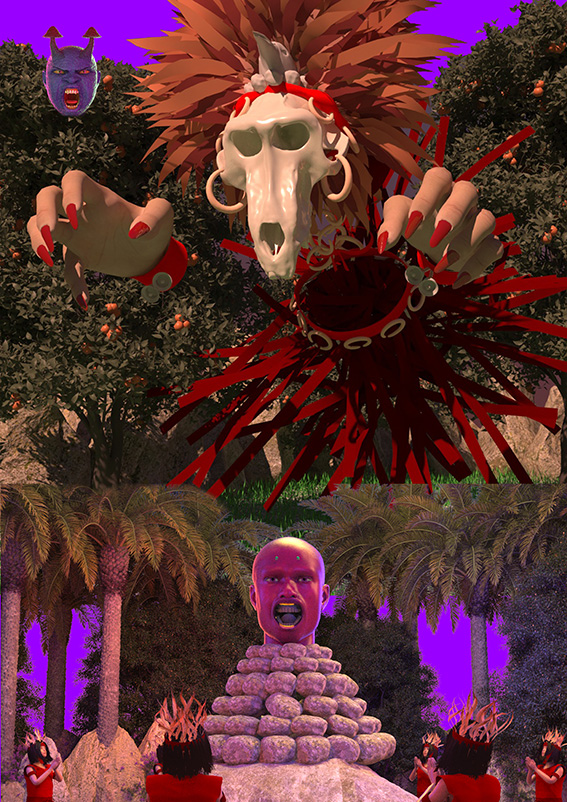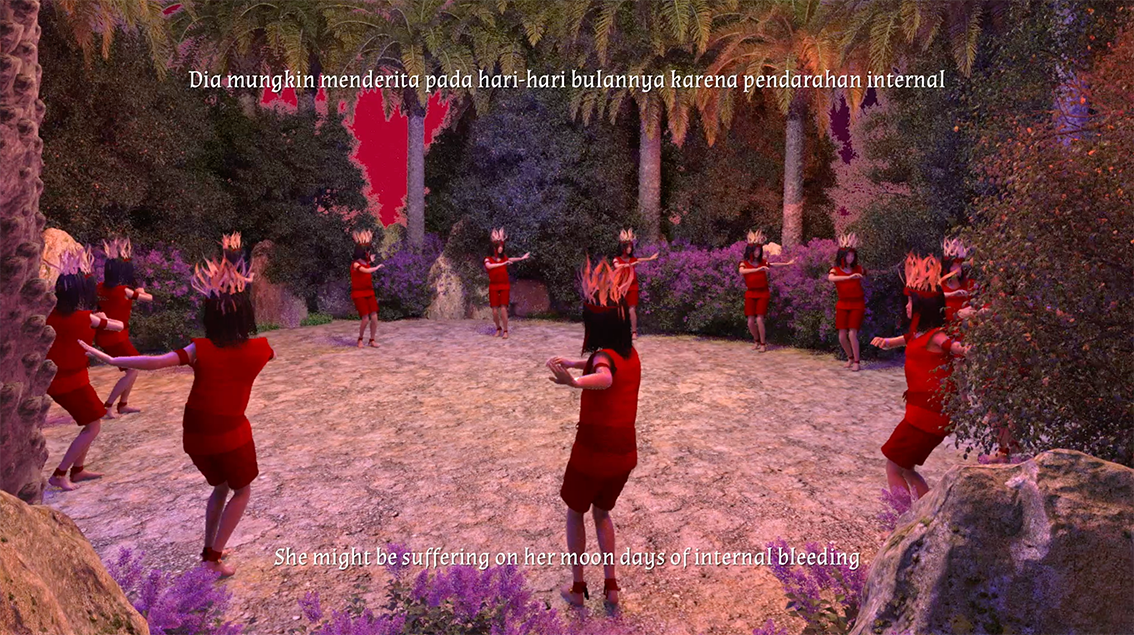Natasha Tontey is an Indonesian filmmaker and visual artist from Minahasa, the northernmost point of the Indonesian island, Sulawesi. In 2021, she reflected on her identity as a Minahasan in her film art piece, Wak’anak Witu Watu—which gained critical acclaim as it was selected for the Singapore International Film Festival. Wak’anak Witu Watu is Tontey’s interpretation of a Minahasan folktale that speaks about a woman who gave birth to stones, rocks, and minerals. Besides retelling this folktale, the film also integrates many aspects of Minahasan culture, including traditional garments, architecture, dances, and even music.

The depicted woman is a revered mythological figure in the Minahasan community, she is said to have been the first human being and the one to have given birth to stones that make up the very ground that humanity walks on today. The existence of this folktale means that the Minahasan people have long held a posthuman consciousness, as they saw inanimate objects such as stones, rocks, pebbles and other minerals as equals. Hence, the film becomes the perfect conduit to both preserve Minahasan culture and advocate for people’s increased attention towards Mother Nature—calling for climate action in today’s reality. This is why the piece is relevant to the United Nations Sustainable Development Goals of Reduced Inequalities and Climate Action.
Trailer of Wak’anak Witu Watu by Natasha Tontey. Video courtesy of the Singapore International Film Festival (SGIFF).
In the film, figures dressed in traditional Minahasan garb perform Kabasaran Dance, a Minahasan warrior dance traditionally performed by men as they move to intricate choreography involving weapons that are passed from generation to generation. This dance is accompanied by Bia Music, a traditional Minahasan music that mainly uses conch shell instruments. Both of these cultural elements are dying out due to the youth’s preference for global pop culture and the lack of a supportive environment to cultivate and pass on this cultural knowledge.

Coming back to the presented folktale, Tontey considers it to be a post-human truth that Minahasan society has always been conscious of, one that modern science has only recently been catching up to. “In this work, I stress the notion to see the role of stone not only as an instrument or tools in human life but also as a being with the same interiority with another sentient being,” writes the artist.
At the end of the day, it is underlined that everything on this planet, whether organic or inorganic, has a part to play in the larger planetary ecosystem, a part that is no less important than those played by human beings. Hence, there is a need for humanity to try their best to ensure the longevity of these elements, and that no human activity might disrupt this natural order.
Find out more about Wak’anak Witu Watu by Natasha Tontey and her other pieces by checking their Instagram @krazykosmickid.
